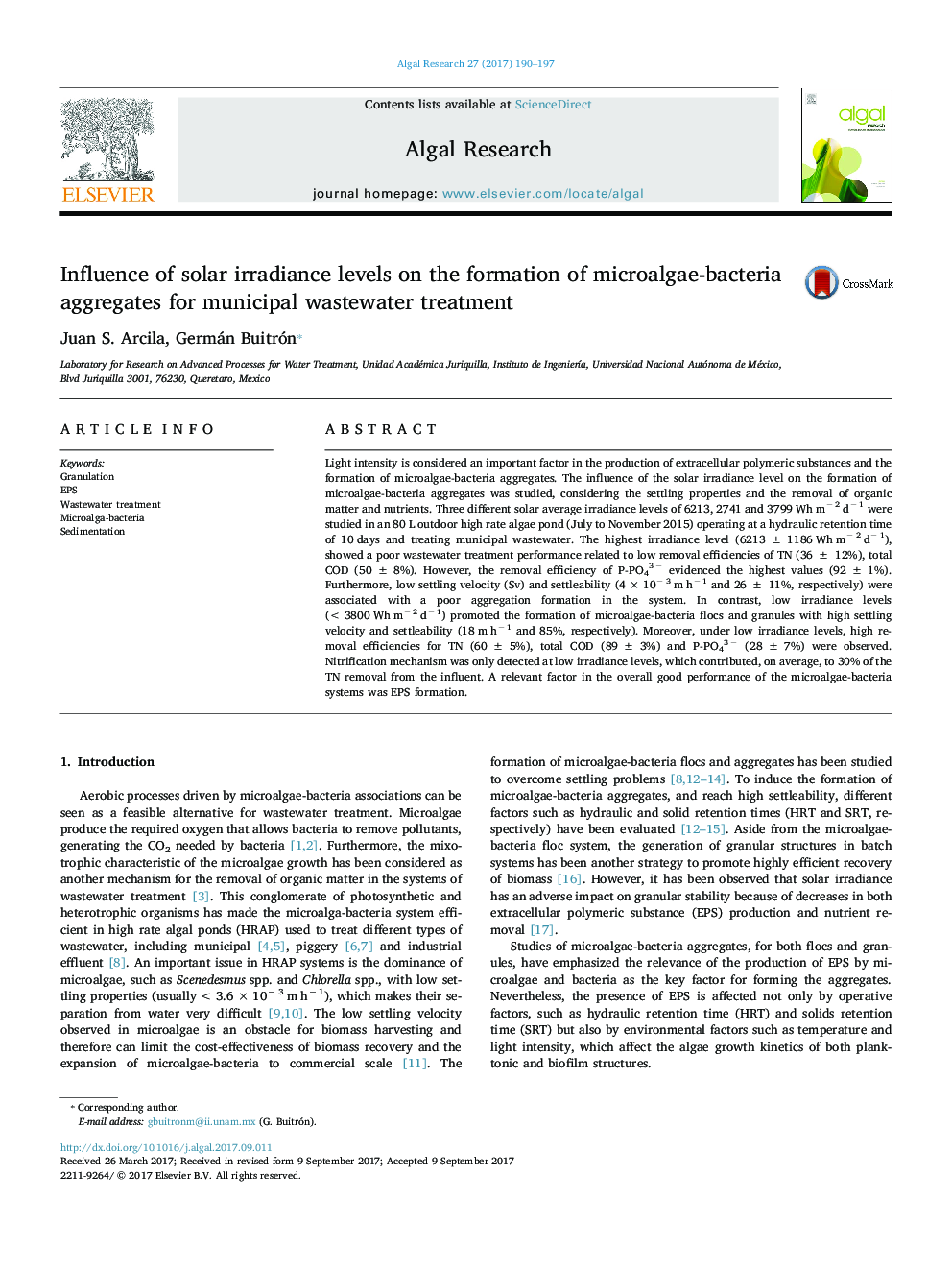| Article ID | Journal | Published Year | Pages | File Type |
|---|---|---|---|---|
| 5478545 | Algal Research | 2017 | 8 Pages |
Abstract
Light intensity is considered an important factor in the production of extracellular polymeric substances and the formation of microalgae-bacteria aggregates. The influence of the solar irradiance level on the formation of microalgae-bacteria aggregates was studied, considering the settling properties and the removal of organic matter and nutrients. Three different solar average irradiance levels of 6213, 2741 and 3799 Wh mâ 2 dâ 1 were studied in an 80 L outdoor high rate algae pond (July to November 2015) operating at a hydraulic retention time of 10 days and treating municipal wastewater. The highest irradiance level (6213 ± 1186 Wh mâ 2 dâ 1), showed a poor wastewater treatment performance related to low removal efficiencies of TN (36 ± 12%), total COD (50 ± 8%). However, the removal efficiency of P-PO43 â evidenced the highest values (92 ± 1%). Furthermore, low settling velocity (Sv) and settleability (4 Ã 10â 3 m hâ 1 and 26 ± 11%, respectively) were associated with a poor aggregation formation in the system. In contrast, low irradiance levels (< 3800 Wh mâ 2 dâ 1) promoted the formation of microalgae-bacteria flocs and granules with high settling velocity and settleability (18 m hâ 1 and 85%, respectively). Moreover, under low irradiance levels, high removal efficiencies for TN (60 ± 5%), total COD (89 ± 3%) and P-PO43 â (28 ± 7%) were observed. Nitrification mechanism was only detected at low irradiance levels, which contributed, on average, to 30% of the TN removal from the influent. A relevant factor in the overall good performance of the microalgae-bacteria systems was EPS formation.
Related Topics
Physical Sciences and Engineering
Energy
Renewable Energy, Sustainability and the Environment
Authors
Juan S. Arcila, Germán Buitrón,
